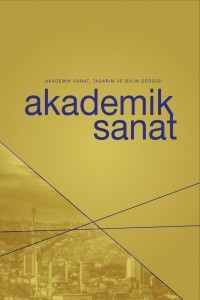Tiyatroda Sanal Gerçeklik Atılımı
Tiyatro ve sanal gerçeklik arasındaki en belirgin ortaklık; gerçek ya da kurgusal bir durumu, olayı canlandırmalarıdır. Nitekim tiyatronun özü salt sanat iken sanal gerçeklik, sanat dahil başka birçok alanı kapsamına alır. Tiyatro başlangıcından itibaren döneminin teknolojileriyle yakın temasta olmuştur. Sanal gerçeklik ise son kullanıcıya ulaşma ve daha geniş kapsamda birçok alanda kullanılabilirlik konusunda yeni olarak değerlendirilen ve birçok alana entegre edilebilen bir teknolojidir. Tiyatro canlılık, o an orada olma, tekrar edilmezlik gibi özelliklere sahipken, sanal gerçeklikte bunlar opsiyoneldir. Tiyatro, canlılığını ve o an orada olma özelliğini kaybettiğinde özünü yitirme tehlikesi ile karşı karşıya kalır. Tiyatro oyunlarının internet ile birlikte erişime açılması, son zamanlarda canlı yayınlarla izlenebilmesi bu tehlikeyi açık eden belirteçleri göstermiştir. Sanal Gerçeklik, seyirciyi/deneyimleyiciyi yarattığı atmosfere daldırır, duyularını etki altına alarak kurguya kaptırır. Bu bakımdan sanal gerçeklik sistemleri, mekânda olma hissini yansıtması ve daldırma etkisini sağlamakla birlikte tiyatronun canlılık ve o an orada olma özellikleri bağlamında gerçeklik etkisine en yakın algıyı yaratabilmektedir. Tiyatro, sanal gerçeklik ile kendisini aşabilir fakat bu aşma durumu onu olduğundan başka bir türe de evriltebilir. Bu çalışmada tiyatroda 360˚ video kapsamında “Hamlet 360: Thy Father’s Spirit” ve sanal gerçeklik kapsamında “Finding Pandora X” oyunları değerlendirilecektir. Sanal gerçeklik ve tiyatro arasındaki köprüler ve bariyerler, geleceğe dair varsayımlar incelenecektir.
Anahtar Kelimeler:
Sanal Gerçeklik Tiyatrosu, Dijital Tiyatro, Dijital Performans, 360 Tiyatro, interaktif tiyatro
Virtual Reality Breakthrough In Theater
The most obvious partnership between theater and virtual reality (VR); It is their re-enactment of a real or fictional situation or event. Another commonality between the two is the desire to immerse the audience/experiencer in the atmosphere they have created and to influence their senses and immerse them in the fiction. As a matter of fact, while the essence of theater is pure art, VR encompasses many other fields, including art. The theater has been in close contact with the technologies of its period since its inception. VR, on the other hand, is a technology that is considered new and can be integrated into many areas in terms of reaching the end user and usability in many areas in a wider scope. While theater has features such as liveliness, being there and unrepeatable, these are optional in VR. Theater faces the danger of losing its essence when it loses its vitality and ability to be there at that moment. The fact that theater plays can be accessed together with the internet and that they can be watched with live broadcasts have shown the indicators that reveal this danger. VR systems, while reflecting the feeling of being in the space and providing the effect of immersion, can create the closest perception to the reality effect in terms of the vitality and being there features of the theater. The theater, can surpass itself with VR but this situation of exceeding can evolve it into another genre. In this study, "Hamlet 360: Thy Father's Spirit" within the scope of 360˚ video in the theater and "Finding Pandora X" within the scope of VR will be evaluated. Bridges and barriers between virtual reality and theater, assumptions about the future will be examined.
Keywords:
Virtual Reality Theatre Theater in Pandemic, Digital Theatre, , Digital Performance, 360 Theater,
___
- Akarsu, B. (1979) Felsefe Terimleri Sözlüğü (2. Baskı). Ankara: Türk Dil Kurumu.
- Bolay, S. H. (1999). Felsefi Doktrinler ve Terimler Sözlüğü (8. Baskı). Ankara: Akçağ.
- Cohen, R. (2008). Theatre (8. Baskı). Boston: McGraw Hill.
- Çapan, C. (1992). Değişen Tiyatro (3. Baskı). İstanbul: Metis.
- Hançerlioğlu, O. (1998). Ruhbilim Sözlüğü. İstanbul: Remzi.
- Nutku, Ö. (1993). Dünya Tiyatrosu Tarihi Cilt 1 Başlangıcından - 19. Yüzyıl’a Kadar. İstanbul: Remzi.
- Reilly, J. H., Phillips, M. S. (2002). İntroducing Theatre (8. Baskı). USA: Thomson Learning.
- Scales, T. (2008). The Reality from Virtual Reality. International Journal of the Academic Business World, 12(2), 67-68.
- Sherman, W. R., Craig, A. B. (2003). Understanding Virtual Reality Interface, Application and Design. San Francisco: Morgan Kaufmann.
- Slater, M., Wilbur, S. (1997). A Framework for Immersive Virtual Environments (FIVE): Speculations on the Role of Presence in Virtual Environments. Presence: Teleoperators and Virtual Environments, 6(6),603–616.
- Steffen, J. H., Gaskin, J. E., Thomas O. M., Jeffrey L. J., Wolman, I. (2019). Framework of Affordances for Virtual Reality and Augmented Reality. Journal of Management Information Systems, 36(3), 683–729.
- Steuer, J. (1992). Defining Virtual Reality: Dimensions Determining Telepresence. Journal of Communication, 42(4), 73–93.
- Suchkov, B. (1976). Gerçekçiliğin Tarihi (çev. A. Çalışlar). İstanbul: Bilim.
- Şener, S. (2012). Dünden Bugüne Tiyatro Düşüncesi (7. Baskı). Ankara: Dost.
- URL 1: https://www.americantheatre.org/2019/01/25/what-dreams-may-come-a-vr-hamlet-puts-us-in-the-room/ Erişim Tarihi: 05.06.2021.
- URL 2: https://www.wgbh.org/hamlet360 Erişim Tarihi: 05.06.2021.
- URL 3: https://www.nytimes.com/2019/01/25/theater/hamlet-virtual-reality-google.html Erişim Tarihi: 06.06.2021.
- URL 4: https://commshakes.org/production/hamlet-360-thy-fathers-spirit/ Erişim Tarihi: 06.06.2021.
- URL 5: https://doubleeye.co/pandora Erişim Tarihi: 06.06.2021.
- URL 6: https://www.broadwayworld.com/article/Kiira-Benzings-FINDING-PANDORA-X-To-Have-North-American-Debut-At-SXSW-Film-Festival-20210309 Erişim Tarihi: 08.06.2021.
- URL 7: https://vrscout.com/news/finding-pandora-x-live-vr-theater/# Erişim Tarihi: 08.06.2021.
- URL 8: https://skarredghost.com/2020/11/14/finding-pandora-x-review-vr/ Erişim Tarihi: 08.06.2021.
- Yadin, G. (2018). Virtual Reality Exceptionalism. Vanderbilt Journal of Entertainment & Technology Law. 20(3), 839-880.
- ISSN: 2458-8776
- Yayın Aralığı: Yılda 3 Sayı
- Başlangıç: 2015
- Yayıncı: Ankara Hacı Bayram Veli Üniversitesi
Sayıdaki Diğer Makaleler
HOW SCİENCE FİCTİON FİLMS REFERENCES LİTERATURE AS SUBTEXT
BİR RÖNESANS KADINI SOFONISBA ANGUISSOLA’NIN SANATI ÜZERİNE BİR OKUMA: OTOPORTRELERİ
TÜRKİYE’DEKİ POPÜLER MÜZİKLERDE BAĞLAMANIN KULLANIMI
Uğur DOĞAN, Mehmet Serkan ÇAKIR
MASAÜSTÜ YAYINCILIĞIN İLK YILLARINDA YENİLİKÇİ TİPOGRAFİK YAKLAŞIMLAR: NEVILLE BRODY
INSTAGRAM’DA FOTOĞRAF PAYLAŞIMI VE SANAL BENLİK OLGUSUNUN SUNUMU
Bülent SALDERAY, Ayşegül ERTEN
KONSERVATUVARLARIN ÇALGI EĞİTİMİ MÜFREDATLARINDA ÇAĞDAŞ TÜRK MÜZİĞİ ESERLERİNİN YERİNİN İNCELENMESİ
Tiyatroda Sanal Gerçeklik Atılımı
AUTEUR HAYAO MİYAZAKİ VE İNSANBİÇİMCİ YAKLAŞIM: KÜÇÜK DENİZ KIZI PONYO ANİMASYON FİLMİ
